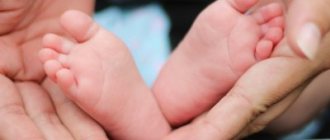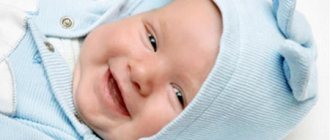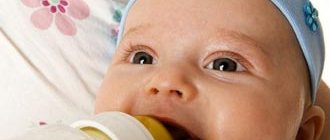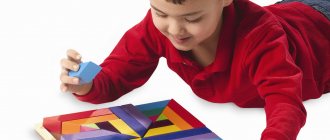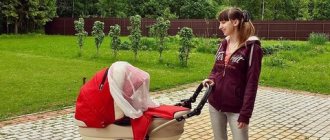Physical parameters per year and two months
The WHO standard for 14 months has developed the following indicators:
- Weight – 10-13 kg
- Height 74-82 cm
- Head circumference – 46-48 cm
- Chest circumference – 48-51 cm
Important! Small deviations from the norm are allowed. Don't worry if your baby is a little larger or, conversely, smaller than the surrounding children. Each child develops in different conditions, it is not surprising that each of his features is formed in his own way.
Physical development of the child
At the age of one year and two months, the child’s height is 74-82 cm. His weight is on average 10-13 kg. Head circumference - 46-48 cm, chest circumference - 48-41 cm. Individual developmental characteristics begin to appear more and more clearly. Normal values may differ for boys and girls. Weight depends on the type of food, appetite and activity of the baby. A special table will help you find out exactly how much a child should weigh and what his height should be.
See also:
Features of child development at 2 months Child development calendar
How to help a child’s development at 1 year of ageChild development calendar
Features of child development at 1 year and 8 months Child development calendar
Children aged one year and two months walk confidently, climb small hills, and easily change their body position. They can sit down and get up without any problems, they tumble and try to run. The child carries large toys in his hands, pushes and pulls them by the string, and tries to play football with a ball. Coordination of movements improves significantly, the baby no longer loses objects from his hands and falls so often. Can safely open and close desk drawers, cabinet doors and cabinet doors. He pulls out all the things he likes from there. Don't be surprised if you find your little one near the closet, surrounded by her clothes or daddy's tools. Do not yell at your baby, this may upset him. After all, he doesn’t understand why mom is angry.
The child's games become more varied. He begins to build a Lego set with large parts, transports cars, rocks a small horse, and presses buttons. If he needs to get something, he will calmly climb onto a chair or sofa. Some children already realize that they can put two objects on top of each other in order to get to the desired thing that is too high. Additional tools are used for games. For example, they push a ball with a stick. They actively copy the movements of parents and older children. They confidently show the things they want, emphasizing their desires with words or demanding exclamations. At the beginning of the second year and second month, the baby’s ability to learn increases significantly, which parents should take advantage of.
What can a baby do?
At this age, children can already walk without outside support.
Children can also climb stairs themselves, sit down, climb onto low obstacles, such as a sofa or chair, and also descend from them.
Performs simple actions on objects.
He can comb his hair, open/close cabinet doors, and ride a toy horse.
If something doesn’t work out for him, he points to an object and asks for help, skillfully imitates the behavior of his parents, for example, putting something to his ear and “talking on the phone.”
He can also ask relatives to play a specific game with him.
You may notice that at this time the baby is already playing on his own.
Basic Skills
Children at this age already know a lot:
- walk without any help;
- recognize relatives and distinguish their voices;
- perform simple actions with objects (for example, roll a car or drive a children's car, pushing off with your legs, as well as open doors, press buttons);
- pronounce the sounds that animals “say” (a cow - “moo-oo”, a dog - “av”, etc.)
- understand requests addressed to them and ask for something, sometimes using actions (for example, to be picked up) or using familiar words (“give”);
- pronounce short words or just syllables (na, dai, yum-yum, mom, baba, etc.)
At this time, the baby’s passive vocabulary expands significantly. He already understands almost all the words addressed to him. Can show, bring, give or take something.
And yet, every new day for children at this age is full of discoveries. Every minute they learn something new, learn something. Their curiosity knows no bounds.
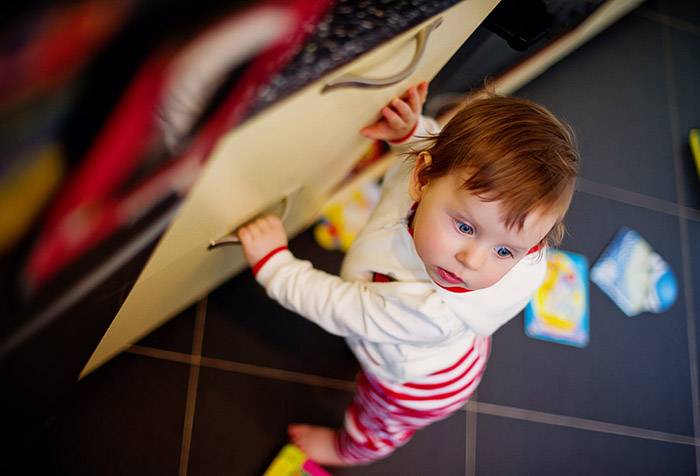
Features of the psycho-emotional sphere
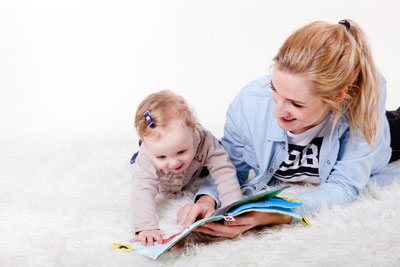
The child no longer needs round-the-clock parental care, mom and dad increasingly hear the word “himself” from their child - the baby does not accept help and tries to do some things on his own.
This could be attempts to eat with a spoon, build pyramids from cubes, or climb or descend stairs.
The baby understands parental prohibitions and permissions, the words “mine”, “yours”, “someone else’s”.
But at the same time, unexpectedly for the parents, he may refuse a request not to take some thing or become capricious when he hears a refusal.
The baby's mood varies from agreeableness to stubbornness. At this age, it is difficult to come to an agreement with a child, so it is important for parents to develop a technique with which they can find a common language with the baby.
Psychologists do not advise shouting at a child or proving him wrong - this will most likely provoke a hysteria. It is better to gently, but clearly and intelligibly explain to the child where and what he is wrong about now. This will not work the first time, but gradually the baby will understand that he cannot achieve anything with the help of whims, he needs to behave calmer. Parents will begin to have a meaningful dialogue with their baby when he reaches 18 months.
Also, mom or dad may notice that the child often throws everything in his path. Don't scold him for this. This is how he also learns about the world - he gets used to his vertical position. Since his coordination is not yet fully developed, when he scatters objects, he learns to correctly distribute the load, while comparing the selected items by weight and size.
Speech
The child’s passive vocabulary grows. He fulfills simple requests without any problems, naming some himself. Also, children already understand what people around them tell them; if you ask them to show an object with which they are familiar, they will easily show it, be it an animal in a book or some kind of toy of theirs. Basically, the child pronounces one- or two-syllable words , and can come up with his own name for a thing, based on its general properties.
The baby imitates the sounds of animals and also distinguishes between them. Now he can distinguish the voice of a loved one from the voice of a stranger.
Diet at 14 months: what to eat
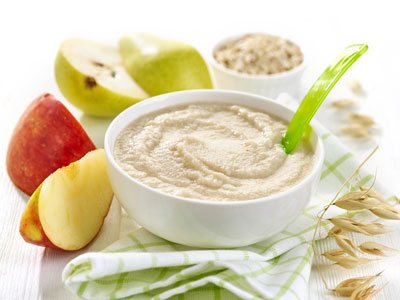
Some children are still breastfed, but this does not mean that their food should not be varied.
The child is already getting new teeth, and this is a reason to introduce new foods into the diet, without forgetting about a balanced diet.
Sample menu:
- Breakfast: it is better to give the baby porridge as before, but do not grind it so much, but rather boil the cereal. Vegetables, cottage cheese, eggs, fish and meat purees will be beneficial for the child. Offer tea, fruit juice or milk to drink.
- Lunch: be sure to serve soups - vegetable, meat, serve the second course with a side dish, you can pamper your child with sweets after the main meal, give him compote, soufflé or jelly.
- Afternoon snack: serve your baby some fermented milk dish with fruit and cookies, but don’t overdo it. If the afternoon snack is too heavy, the child will not eat enough at dinner.
- Dinner: Build on breakfast. The baby does not need to fill his belly before bed; let the food be light and quickly digestible.
Please note: If you notice that your child is tired before going to bed, you can give him a light snack in the form of some fruit or cottage cheese.
Recipe
Carrot and pumpkin casserole.
For children, it is better to steam this dish - in a slow cooker or in a water bath.
You will need:
- Grated carrots - 200 ml
- Grated pumpkin – 200 ml
- Milk – 100 ml
- Sugar - 1 tbsp. l.
- Semolina – 2 tbsp. l.
- Egg – 1 pc.
Peel, rinse and grate a piece of pumpkin, also grate the washed and peeled carrots. Try to have the same amount of carrots and pumpkins .
Pour the milk into the pan and wait for it to boil over low heat , do not forget to stir. Place pumpkin and carrots in a bowl, reduce heat to simmer vegetables. Once all the milk has evaporated and been absorbed, remove the pan from the heat and cool.
Beat the egg and add sugar, mix well. Add sugar depending on how much your child eats. Add the semolina and mix again, avoiding the formation of lumps.
Take a small deep plate and place half of the dough into it. Pour 1.5-2 cm of water into the pan, place a plate of dough in it, cover with a lid and place on low heat.
Do not let the water boil too much, make sure that splashes do not fall into the plate. Do not forget to make sure that the water does not completely boil away, otherwise the dough will quickly absorb the burning smell.
Wait for the water to boil, then wait another 20-25 minutes. The casserole is ready. If you want to sweeten it, sprinkle powdered sugar on top.
Day and sleep routine

Make changes based on your child's individual needs.
During the daytime, do not forget about walks. If it’s warm outside, then plan your day so that you can walk with your baby twice a day for 2-3 hours.
In winter, reduce the time you walk outside to one hour; if you see it is too cold, then perhaps you should stay at home.
Attention: your baby will enjoy walks before bed for about half an hour. The child no longer needs to sleep outside, so it is normal for him to run around and explore the world around him. Plus, such walks will tire the baby, and it will be easier to put him to sleep.
You can gradually reduce daytime sleep from two times for 1-1.5 hours to one for 1.5-2 hours . Take a closer look at your baby's behavior. If he sleeps peacefully both times a day, then change it with the transition, and if you notice that he, on the contrary, constantly wakes up and sleeps poorly, then this is the time to change the twice-daily nap to a longer one-time nap.
Child's regimen and nutrition
A child's diet for one year and two months is quite varied. Many children receive breast milk in the morning, evening, and sometimes at night. The latest recommendations suggest that children should be weaned towards the end of the second year. Almost all “adult” products are present on the child’s menu. He already drinks cow's milk, although it should be given in a diluted form. Some pediatricians recommend feeding adapted formulas for children 1-3 years old. Fermented milk products must be present in the diet; this will help improve the condition of the intestinal flora and digestion.
Porridges occupy an important place in the menu; they do not have to be prepared in liquid form; you can simply serve well-cooked cereals. Vegetables are offered in soups or as side dishes for meat dishes. The main protein products for a child are meat, eggs, cottage cheese, and fish. We must not forget about fruits; you can give your child citrus fruits little by little. Although the main emphasis should be on apples, pears, and berries. Give strawberries with caution; they can cause allergies. You should not include too many grapes in your menu, as they stimulate fermentation processes in the stomach. Almost all vegetables are allowed; children are fed only legumes with caution, as they increase gas formation.
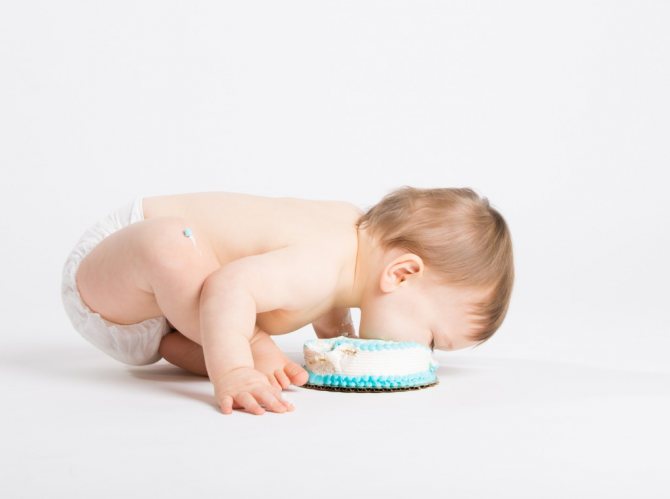
Control your diet
The calorie content of the diet should be 1300 kcal, the volume of food should be 1000-1200 ml. For every kilogram there should be 4 g of protein, 4 g of fat and 16 g of carbohydrates, 70% of proteins should be of animal origin. The child eats 4-5 times a day. It is very important to feed him at the same time. Here is an approximate daily menu for a baby of one year and two months of age:
- Morning meal. Small pasta, cottage cheese, tea
- Dinner. Zucchini and cauliflower soup, mashed potatoes, steamed chicken cutlet, fruit juice
- Afternoon snack. Apple, yogurt, dry cookies
- Evening meal. Milk porridge, bread and butter.
The baby of the second year of life sleeps twice a day. The first dream should be longer than the second. Some children at this age may only go to bed once. If a child, after sleeping twice a day, has trouble falling asleep in the evening or plays for too long, try putting him in the crib only once a day. Walks are important for the baby; in the warm season, you need to walk him twice, for at least 2-3 hours. In winter, walks are reduced to an hour. It is very useful to take your baby outside before bed, at least for half an hour. Children after one year and two months rarely sleep in the fresh air; they actively play, run, when riding in a stroller, look at everything around them, and comment on what is happening.
Are there differences between boys and girls?
- At this age, children's physique is already undergoing changes. Girls remain lower than boys. Also, a feature of the psycho-emotional background of boys is that, due to laziness, they can start walking later than girls.
- Parents may also notice that girls develop communication skills earlier. They can know more words, recognize more emotions.
- At this age, boys are more active. Even to look at a toy, they spend more energy than girls. For children, the choice of toys is obvious. Girls are already attracted to soft and bright ones, and boys are attracted to mechanical ones.
- Girls show more desire to communicate than boys.
What a child can do at 1 year and 2 months: developmental features of the baby
- Walks confidently without outside help (in this sense, boys are lazier than girls; they often start walking later. This is not a deviation, but a feature of psycho-emotional development).
- Passive vocabulary increases , the child is already able to accurately fulfill small requests (for example, “bring the car” or “come to the crib”).
- Can pronounce short syllables denoting words (“mom”, “dad”, “ba”, “yum”, “ches” - comb, and, of course, everyone’s favorite “kaka”, well, etc.).
- Can imitate the sounds that animals make (lamb “beee”, pussy “meow”, etc.).
- Knows how to do simple manipulations with objects , play with large toys (ride a toy horse, pushing off with legs, press buttons, open and close doors and drawers, comb hair).
- Can point to objects and ask for help (point with a finger at a high-lying toy and say “give” or point at the refrigerator with the word “yum”).
- May ask to be rocked or carried on shoulders.
At this age, children usually do not yet know how to:
- ask to go potty. If the child is taught, then he begins to ask, if not, then, of course, not.
- wield a spoon. But at this age, the child already begins to independently eat thick food from a spoon.
These are complex skills, more complex, they come later.
Activities with your baby
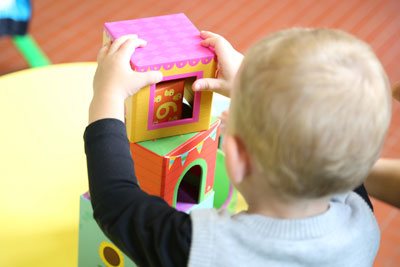
It will also be useful for the baby to learn how the objects around him work, for example, how to flip a switch, plug a plug into a socket, fasten and unzip a zipper.
A new generation gaming complex called a busy board is perfect for this role.
By playing with it, the baby will have an idea of how to do the simplest things in the future, plus, he can try to figure it out himself, and at this time the parents can go about their business, just keeping an eye on the child.
There are many ways to add variety to your games:
- To develop speech skills, learn rhymes and songs with your baby, voice your actions when cooking, cleaning or feeding the baby. While reading books, explain to your child what is shown in the pictures.
- Study the properties of objects. Show that the ball is rolling and that you can build something out of the cubes. Show your child that paper can tear and water can be poured from one saucepan to another. Also 14 months is a good age to give your baby pencils and paper, but be careful not to let him move onto the walls.
- Teach your baby basic words such as “hello,” “bye,” “thank you,” and “please.” Show how to share toys and food.
- Even though your baby is already walking, continue to develop his mobility skills. Let him learn to overcome obstacles, walk in a straight line and collect toys in a box.
- Don't forget about your child's fine motor skills. Build pyramids with him, pour the cereal from one cup to another, making sure that the baby does not pull it into his mouth, attach clothespins to the pillow and let the baby remove them and return them to their place.
Activities with a child
Activities with a baby after one year should be in the form of a game. Under no circumstances should you force him to do anything, otherwise the baby will lose interest in learning. Don’t try to do everything for the baby, just show how to play on your own. It is very important now to develop the skills of interaction and manipulation with different objects. Buy your child cubes, nesting dolls, construction sets, pyramids, special frames for figures and sorters. With the help of cubes you can build towers, houses, teach your child to put them in and out of a box. Your child will really enjoy playing with nesting dolls or caps that are inserted into each other. He will be able to learn to compare the sizes of objects and their relationships. This activity improves the development of the baby’s emotional and sensory sphere.
Organize small dramatizations for your child. Show how you can load Lego bricks into a car, transport them to another place and unload them there. Demonstrate how a bunny comes to visit a bear cub, and a duck goes to the river to swim. You will see that after a while the baby will repeat such games on his own. They stimulate the development of imagination and help the baby perform more complex actions.
Color perception develops drawing well. Children of the second year of life can draw well with their fingers. Buy paints and paper for your child and draw with him. You can train fine motor skills using plasticine. Modeling is one of the favorite activities of children at this age. Many children love to play with various loose objects, such as cereals. Pour buckwheat or rice groats into a bucket, put a nut or pea in there and let the child take them out. This activity perfectly stimulates the development of tactile sensitivity in the fingers.
Don't forget to read books to your child. After a year he becomes an active participant in reading. He takes pleasure in showing objects and animals on the pages, tries to repeat the verse, and at the same time speaks in your intonations. It will be useful to buy training videos. Short stories will allow your child to learn a lot of new information. He will begin to learn colors, basic counting, there are even special programs for learning foreign languages.
Don't forget that each child develops individually. His skills may differ from those of his peers. How development will proceed depends not only on the intensity of the activity, but also on his natural abilities, activity, gender and even weight. At this age, children learn new skills over the course of several days. So after some time the situation may change, and in many skills your little one will outperform his friends.
Medical support
1 year 2 months is the time when the baby continues to explore everything. Don't give up on the safety rules you followed last month. If you have not yet purchased clamps for windows and cabinets, silicone covers for corners, then it’s time to do so.
Important: watch carefully what your baby puts in his mouth. Keep tablets and household chemicals away from his eyes and hands.
Keep an eye on your child on the playground. Do not let him eat sand and climb the slide and stairs himself.
Such simple safety rules and parental attentiveness will help protect your baby from harm.
Our website also contains materials about the following periods of life for babies: a year and 3 months, a year and 4 months, a year and 5 months, a year and 6 months, a year and 7 months, a year and 8 months, a year and 9 months, a year and 10 months, year and 11 months.
What can a 14 month old baby do?
Each child develops individually. His skills depend on how well his parents developed him. Therefore, there is a fairly significant difference between the skills of children at 1 year and 2 months. But there are basic skills that every child should master by this age.
List of what a child should be able to do at 14 months:
- understand the meaning of a large number of words;
- fulfill simple requests;
- know and speak some words or syllables;
- stand, walk;
- hold objects;
- play with different toys without assistance;
- imitate adults.
Differences between boys and girls
After a year, children begin to differ more by gender. Girls develop much faster and are happy to demonstrate their skills to others. They begin to dress themselves and go to the potty on their own earlier. In addition, girls excel at remembering and pronouncing new words.
At the same time, boys are more active and restless. True, they need to spend more time to learn new information. But once they learn to use a new toy, they can spend a lot of time with it.




